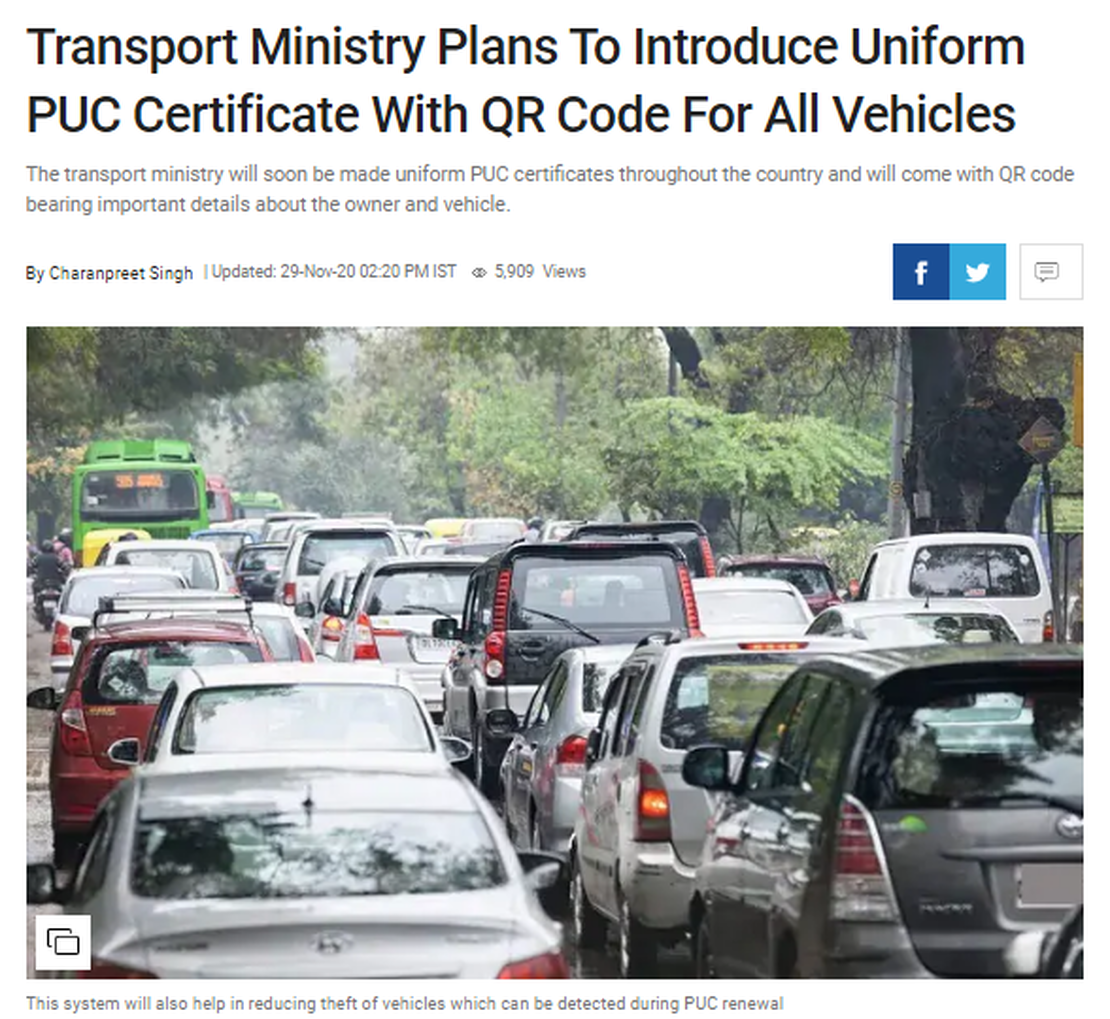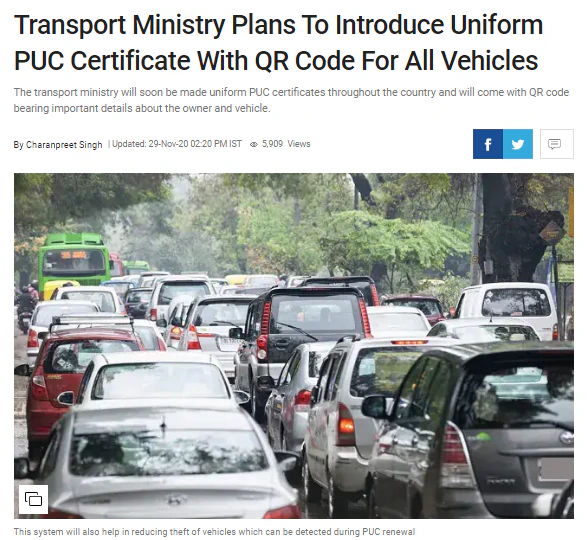Why MoRTH, India mandated QR Coded PUC certificates?
- Rajesh Soundararajan
- Dec 08, 2020
- 4 min read

5 steps that you can take to ensure tamper-proof PUC certificates
The security features will curb the falsification of motor vehicle documents and help in tracking stolen vehicles
The Ministry of Road Transport and Highways (MoRTH), India, is proposing to mandate that all testing centres in India have to incorporate and issue QR code-based PUC certificates for all vehicles. This is only a formalisation of something that has been long pending. After a relatively large scale non-compliance, MoRTH has now decided to wield the stick. It has mandated that the situation is grave and all vehicles need to incorporate a QR code into PUC certificates so that the information can be electronically uploaded to the state or central register of motor vehicles. This will also help them in tracking stolen vehicles when it comes up for PUC renewal.
This mandate is an extremely welcome step. It is also vital that one understands the rationale behind this mandate and breaks it down into simple steps/guidelines so that the vehicle owners get the “why” and “how” to implement this quickly and effectively.
Top 6 points: Why MoRTH mandated QR code-based PUC certificates makes perfect sense
- The number of unrecognised testing centres and fake pollution control certificates in the last few years has increased. This move will help in curbing malpractices such as manipulation of pollution control certificates or outright fake certificates.

With QR Code, it is easy to inscribe all possible details including the name and other specifics of the owner, vehicle and emission status, issuing authority and additional relevant information to help establish authenticity.
Easy verification by relevant third parties. QR codes are ubiquitous today and can be scanned using any smartphone.
Helps to maintain privacy especially of the document holder and the verifier.
Such flexibility, provided by this approach not only ensures security but also helps to bring some uniformity across the vehicle system. It does so, without compromising or bypassing the VAHAN registry - The Integrated Solution for Vehicle Registration, which is a 24X7 online storehouse of all motor vehicle certificates, registration certificates, pollution control certificates, driving licences that are digitised and lodged by testing centres or RTOs.
This helps in the overall objective of digitisation of all the vehicle certificates/documents and pollution control certificates.
Even though one can appreciate the above reasons for having such a system, one issue in this mandate could be the absence of specific guidelines and standardisation. However, this should be considered in a positive light. It gives flexibility to each RTO / testing centre without sacrificing the broad objectives. But for this to happen, I would recommend some critical components of the solution that should be considered by all vehicles and testing centres.
Five things the Secure QR Code solution should have
The right QR Code solution should be based on an advanced high strength digital signature technology with private-public key infrastructure (PKI) that makes the QR code tamper-proof and easily verifiable. Just QR code will not help as regular QR codes with URLs inside are vulnerable to phishing attacks. It is essential to get the QR code security right.
It should work seamlessly for both printed and electronic versions of the certificates and transcripts. This is important because sometimes owners need to send their credentials over electronic means, and it is neither practical nor desirable to link any verification feature to the document’s physical attributes.
It should be easy to validate on an ad-hoc basis by anyone with a simple smartphone app, anywhere – ideally even offline (without network connectivity).
There should be no need to access the MoRTH’s central database for validation, thus making it efficient and keeping the IT systems secure and hack-proof.
The QR code solution should be affordable so that this does not lead to additional fees paid by owners. Ideally, it should be only a small fee per document for all the certificates that the MoRTH generates. It should also be easy to set up - and fit seamlessly with any current document generation system.
Finally, the solution should have had a good track record and experience of preferably five years or more in specifically providing document security solutions using the QR code across other verticals if not transportation vertical itself. It will be an advantage if the solution provider has demonstrated the capability to execute QR code-based projects internationally and that too, with demanding customers across a range of use cases.
Keeping the above five simple guidelines, the MoRTH mandate can be implemented in the form of Secure QR code by all vehicle issuing authorities, while maintaining autonomy and yet standardising the solution for effectiveness and easy acceptance. This will help to enhance and maintain the reputation and integrity of the Indian transportation issuing authority all over the world.
You may also like
Did we tell you about preventing forged University Transcripts ?
10 amazing uses of QR Codes in an industry that you may never have guessed
Fake Degrees Being Sold All Over The World - Cause of Increased Incompetence ?